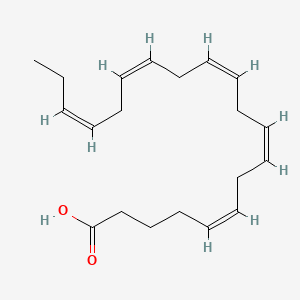| Crandell JR et al. |
Lipid effects of switching from prescription EPA+DHA (omega-3-acid ethyl esters) to prescription EPA only (icosapent ethyl) in dyslipidemic patients. |
2016 |
Postgrad Med |
pmid:27684412
|
| Nagai T et al. |
Circulating Omega-6, But Not Omega-3 Polyunsaturated Fatty Acids, Are Associated with Clinical Outcomes in Patients with Acute Decompensated Heart Failure. |
2016 |
PLoS ONE |
pmid:27824904
|
| Graciano MF et al. |
Omega-3 fatty acids control productions of superoxide and nitrogen oxide and insulin content in INS-1E cells. |
2016 |
J. Physiol. Biochem. |
pmid:27474043
|
| Fialkow J |
Omega-3 Fatty Acid Formulations in Cardiovascular Disease: Dietary Supplements are Not Substitutes for Prescription Products. |
2016 |
Am J Cardiovasc Drugs |
pmid:27138439
|
| Allaire J et al. |
A randomized, crossover, head-to-head comparison of eicosapentaenoic acid and docosahexaenoic acid supplementation to reduce inflammation markers in men and women: the Comparing EPA to DHA (ComparED) Study. |
2016 |
Am. J. Clin. Nutr. |
pmid:27281302
|
| Tian Y et al. |
Bioconversion of Docosapentaenoic Acid in Human Cell Lines, Caco-2, HepG2, and THP-1. |
2016 |
J Oleo Sci |
pmid:27829615
|
| Cholkar K et al. |
Topical delivery of aqueous micellar resolvin E1 analog (RX-10045). |
2016 |
Int J Pharm |
pmid:26706439
|
| Elorinne AL et al. |
Food and Nutrient Intake and Nutritional Status of Finnish Vegans and Non-Vegetarians. |
2016 |
PLoS ONE |
pmid:26840251
|
| Mao JT et al. |
Grape Seed Procyanidin Extract Mediates Antineoplastic Effects against Lung Cancer via Modulations of Prostacyclin and 15-HETE Eicosanoid Pathways. |
2016 |
Cancer Prev Res (Phila) |
pmid:27658889
|
| Mason RP et al. |
Eicosapentaenoic acid reduces membrane fluidity, inhibits cholesterol domain formation, and normalizes bilayer width in atherosclerotic-like model membranes. |
2016 |
Biochim. Biophys. Acta |
pmid:27718370
|
